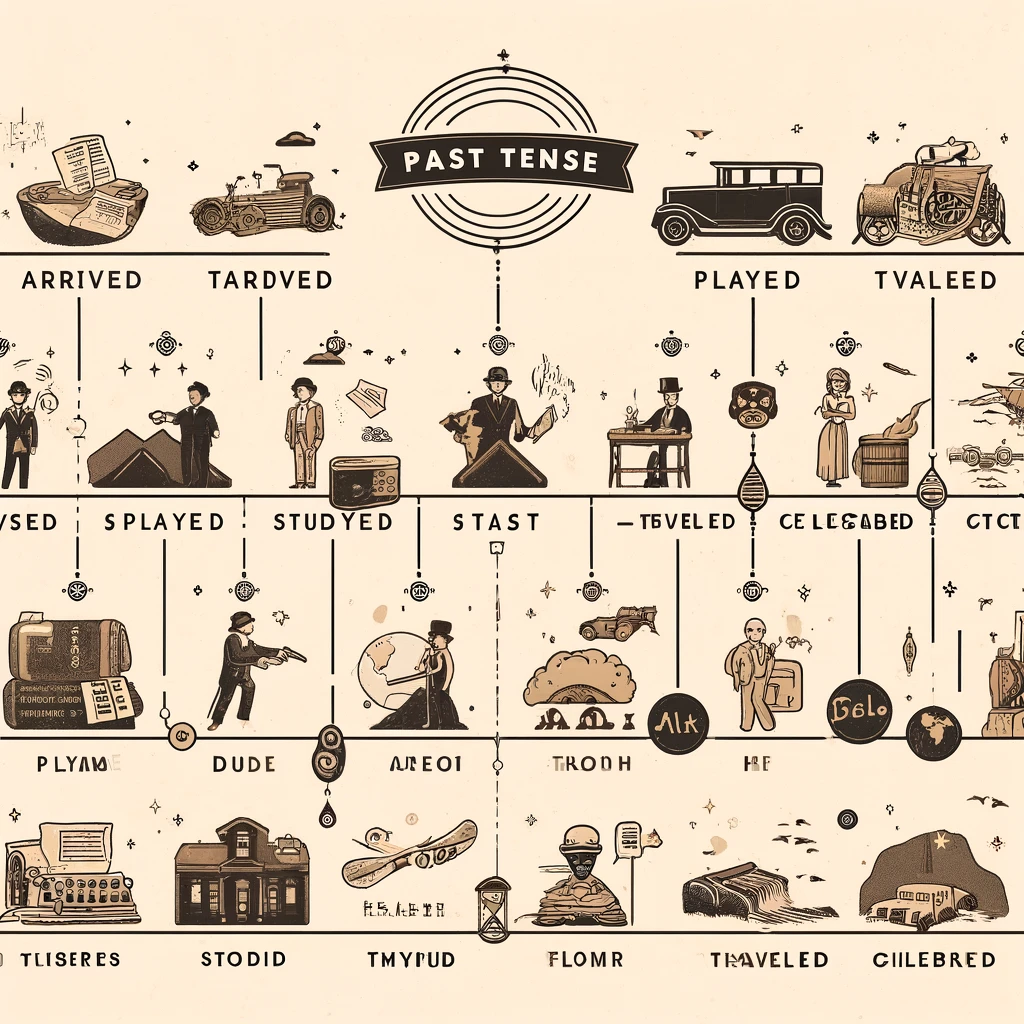THE PAST

Learning goals
- Understand Past Tenses: Review and understand the different past tenses, including past simple, past continuous, past perfect, and past perfect continuous.
- Differentiate Tenses: Identify the differences and similarities between these past tenses.
- Apply Past Tenses: Use past tenses accurately in various contexts through practical examples and activities.
Past Simple
- Use: To describe completed actions that happened at a specific time in the past.
Structure:
- Affirmative: Subject + past form of the verb
- Example: “She visited the museum.”
- Negative: Subject + did not (didn’t) + base form of the verb
- Example: “She didn’t visit the museum.”
- Interrogative: Did + subject + base form of the verb?
- Example: “Did she visit the museum?”

Past Continuous
- Use: To describe actions that were ongoing at a specific time in the past.
Structure:
- Affirmative: Subject + was/were + present participle (verb + ing)
- Example: “She was reading a book.”
- Negative: Subject + was/were not (wasn’t/weren’t) + present participle (verb + ing)
- Example: “She wasn’t reading a book.”
- Interrogative: Was/Were + subject + present participle (verb + ing)?
- Example: “Was she reading a book?”

Past Perfect:
- Use: To describe actions that were completed before another action in the past.
Structure:
- Affirmative: Subject + had + past participle
- Example: “She had finished her homework.”
- Negative: Subject + had not (hadn’t) + past participle
- Example: “She hadn’t finished her homework.”
- Interrogative: Had + subject + past participle?
- Example: “Had she finished her homework?”

Past Perfect Continuous:
- Use: To describe actions that were ongoing up to a point in the past.
Structure:
- Affirmative: Subject + had been + present participle (verb + ing)
- Example: “She had been reading for two hours.”
- Negative: Subject + had not (hadn’t) been + present participle (verb + ing)
- Example: “She hadn’t been reading for two hours.”
- Interrogative: Had + subject + been + present participle (verb + ing)?
- Example: “Had she been reading for two hours?”

Practical Examples and Applications
- Example 1: “She had already left by the time I arrived.”
- Application: Describes an action completed before another past action.
- Example 2: “They were playing soccer when it started to rain.”
- Application: Describes an ongoing action interrupted by another action.
- Example 3: “We visited the museum last weekend.”
- Application: Describes a specific completed action in the past.
- Example 4: “He had been working at the company for five years before he got promoted.”
- Application: Describes the duration of an action before another past action.
- Example 5: “While I was reading, my brother was playing video games.”
- Application: Describes two ongoing actions happening at the same time in the past.
Learning activities
Past Tense Timeline (20 minutes)
Objective: Reinforce the understanding of the sequence of past events.
Instructions:
- You’ll receive a list of events and you will be asked to place them on a timeline.
- You must use past tenses to describe the events on the timeline.
- Example: “First, I woke up. Then, I had breakfast. After that, I went to school.”

Story Reconstruction
Objective: Practice past tenses by reconstructing a story.
Instructions:
- The class will be divided into small groups.
- Each group will receive a story with sentences in the present tense.
- You will have to rewrite the story in the past tense, using appropriate past tenses.
- Example: “She is reading a book” becomes “She was reading a book.”

Role-Playing Interviews
Objective: Apply past tenses in a conversational context. Instructions:
- You will be paired up. One is the interviewer, and the other is a famous person from history.
- The interviewer asks questions about the famous person’s life, and the interviewee answers using appropriate past tenses.
- Example: “Interviewer: What did you do before you became famous? Interviewee: I had been working as a teacher.”

Additional resources
